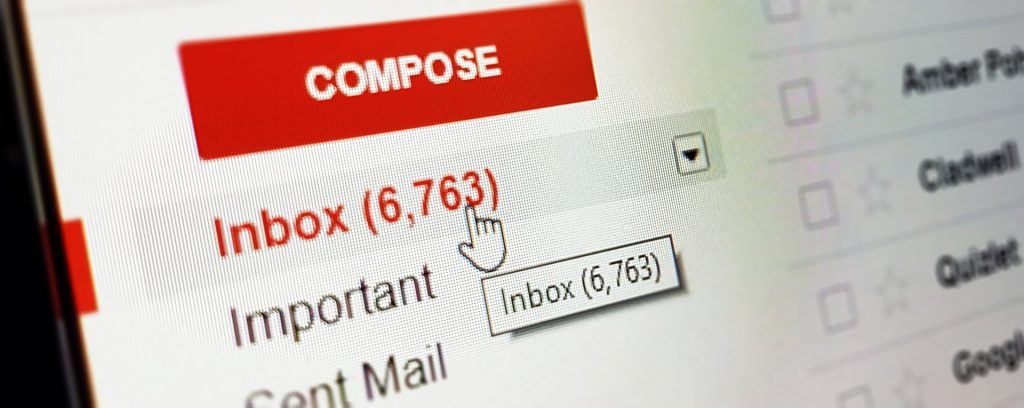Inbox Zero: Could it Work For Your Company?
28th June 2019
Emails were once a revelation. They allowed for instant communication between people wherever they were in the world. As long as you had a computer with an internet connection, you could send a friendly message — or an impatient request for work — as quick as you could type.
But now, businesses are being bogged down with emails, many of which are curbing productivity and there is a high percentage of internal emails which simply don’t need to be sent at all. But what is the solution to this influx? There are a couple you can try, including the intensive ‘inbox zero’ approach.
Why do I have so many emails?
It can start slow, but over time, your inbox can become inundated with notifications. Whether these are from clients, colleagues, spam, marketing companies or a plethora of other sources, it doesn’t take long for your clean, controlled inbox to resemble a digital landfill.
Many businesses rely on emails as a means of record keeping, and that can be a good idea. But if you don’t organise your inbox strategically, you’ll end up with too much to keep track of. You end up with so many emails because they’re an easy solution; they perform an essential communication function, and they do it well. But we end up being overloaded because we rely on emails for things we really don’t need them for.
The best way to clear out your inbox? Proper organisation.
Organise
Whatever email client you use, you’ll be able to create folders and categories to properly collate emails as they come in. This allows you to segment emails from different sources and helps you find them more easily. Obviously, the danger here is creating so many categories that you’re overloaded with those, and sifting through everything is just as tiresome. But for smaller companies looking to nip inbox explosions in the bud, it can be helpful.

Do you need email notifications for everything?
Digital companies use a lot of cloud-based software nowadays. When setting these up to your account, you’ll either link your email to them manually or this will be done automatically. You can eliminate a lot of emails at this stage by simply unticking the email notifications prompt. For some apps, such as Slack, for instance, you really don’t need a separate email every time your non-work-related chat pipes up. So go through all your regularly used software and get rid of email notifications for anything that isn’t adding something useful to your inbox.
Similarly, many emails involve people who aren’t directly related with the topic at hand. Many email chains have people cc’d in when it’s not really necessary. These can then be forwarded to other people even further removed from the initial query, and this can snowball even more. When you send an email with six people attached to it, just think: who really needs to know about this?
Inbox zero
One approach which is growing in popularity is the ‘inbox zero’ approach. Basically, this means dealing with an email as soon as it arrives. Not leaving it until ‘later’. When you let emails sit in your inbox marked as unread, you’re just asking for your inbox to rebel. With inbox zero, you keep your inbox empty — or as close to empty as you can manage — at all times.
For many, this adjustment is too extreme, but for businesses which handle everything via email, it can be extremely effective.
It might be worth trialling this approach then seeing how much of an effect it has. At the very least, it will teach you some things about how you manage your inbox and what you could be doing better.
Indos Computer Services can help your business manage all of its IT issues — including dedicated email setup and support. We provide a clear, jargon–free service to ensure any problems you’re facing with your IT infrastructure are resolved quickly without any drama. To find out more about our services for small to medium–sized businesses in St Albans, Watford and Hemel Hempstead, contact us today.
This entry was posted in Business internal communications, Company News, Email Setup & Support and tagged email setup, Email support, emails, inbox, inbox zero. Bookmark the permalink. ← How the Electronic Spreadsheet Changed the World White Hat Hackers are Hacking for Good →


